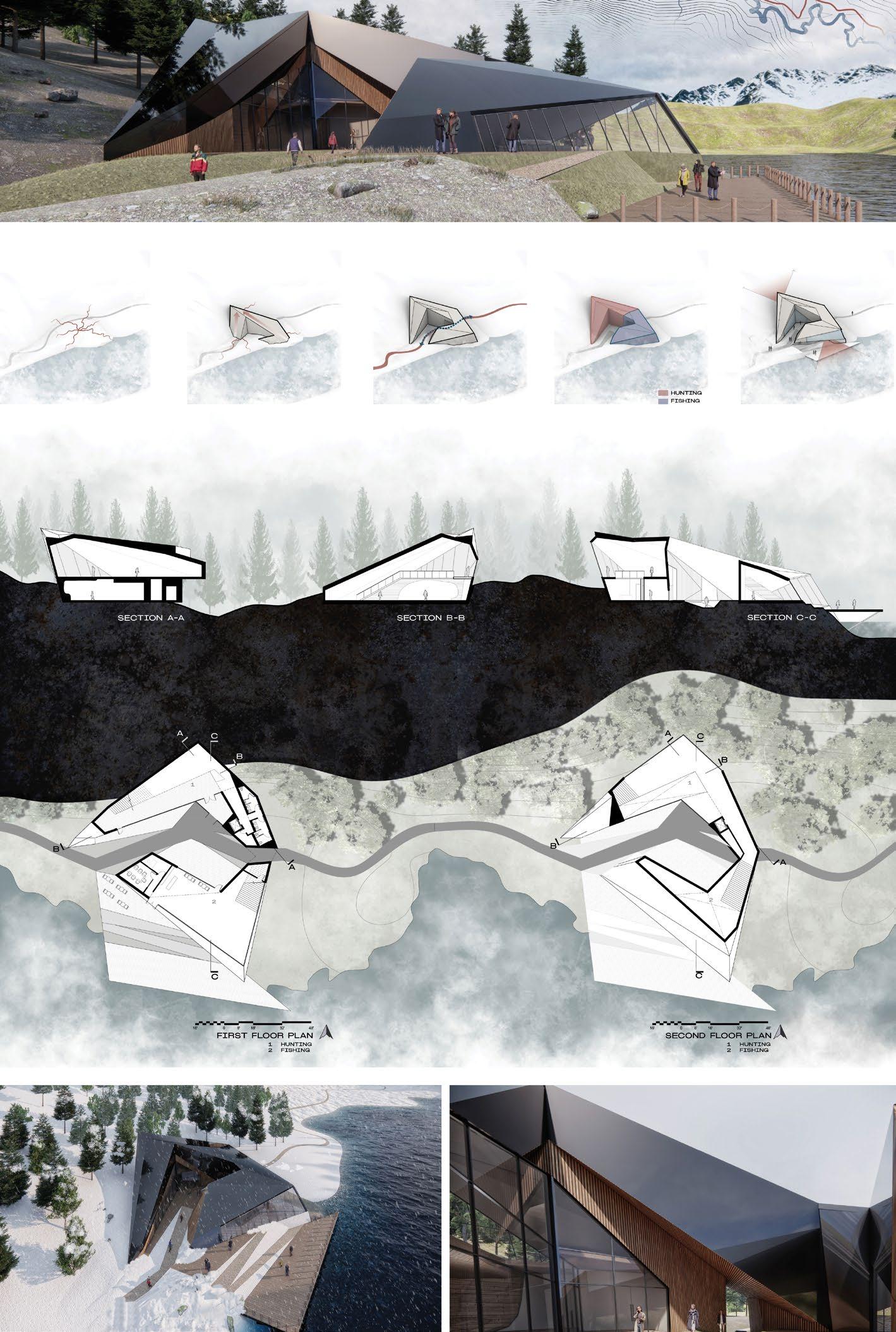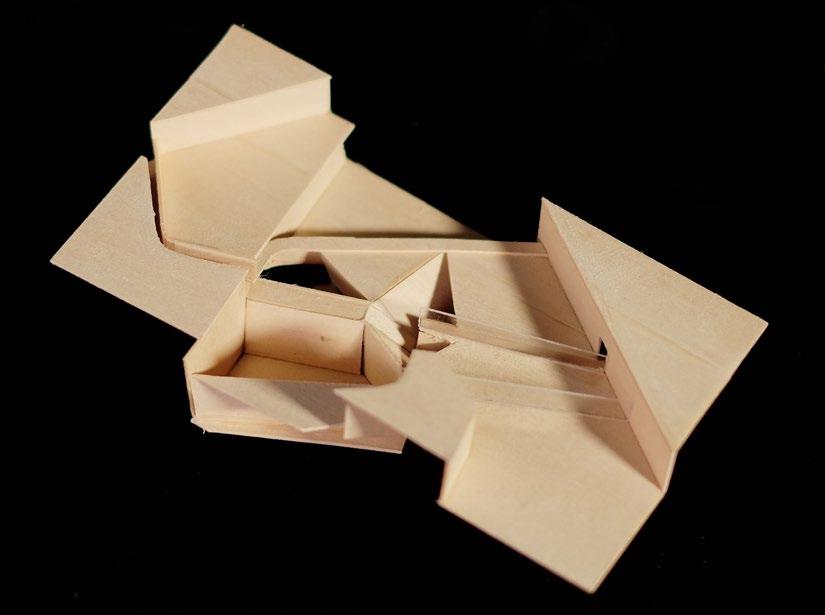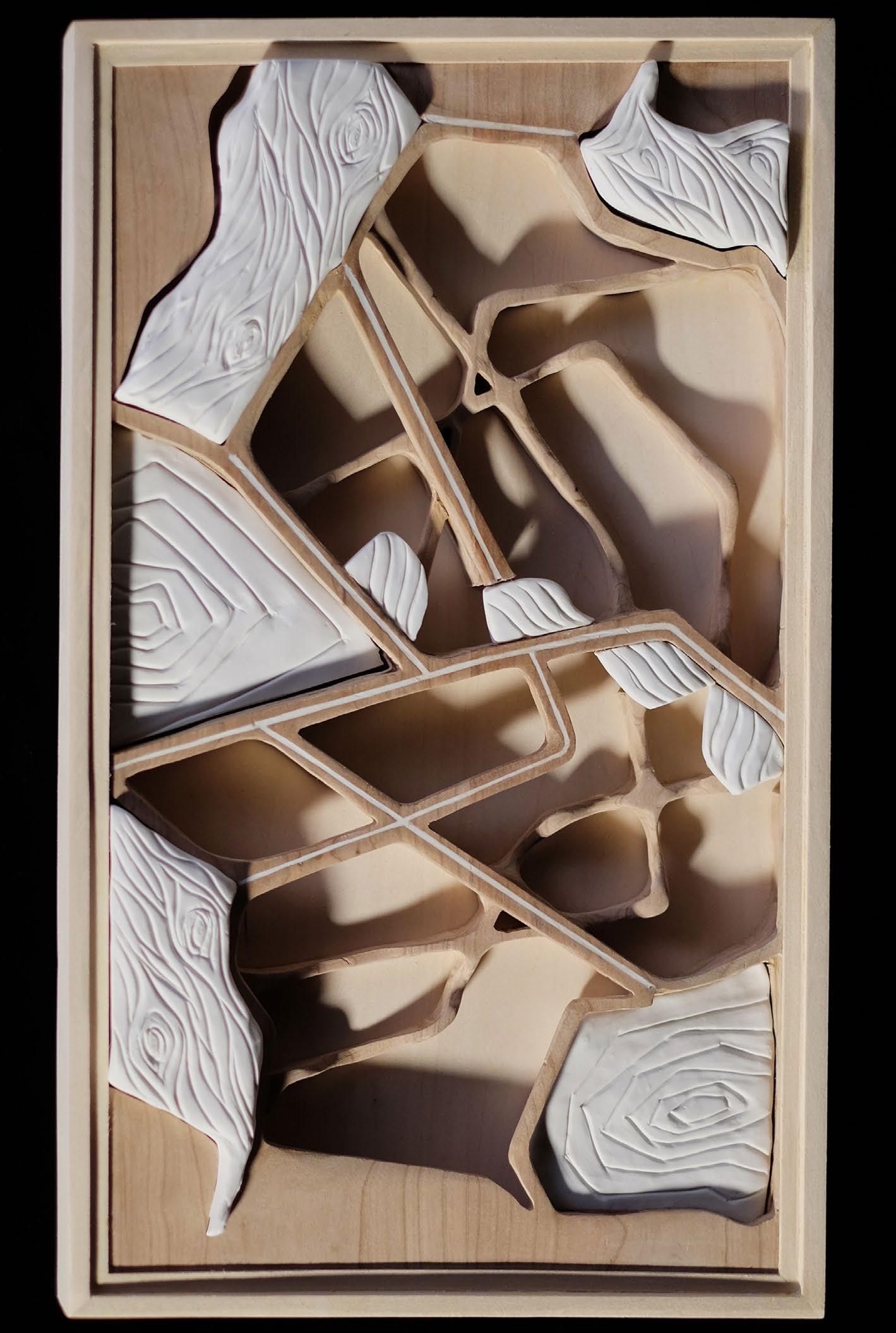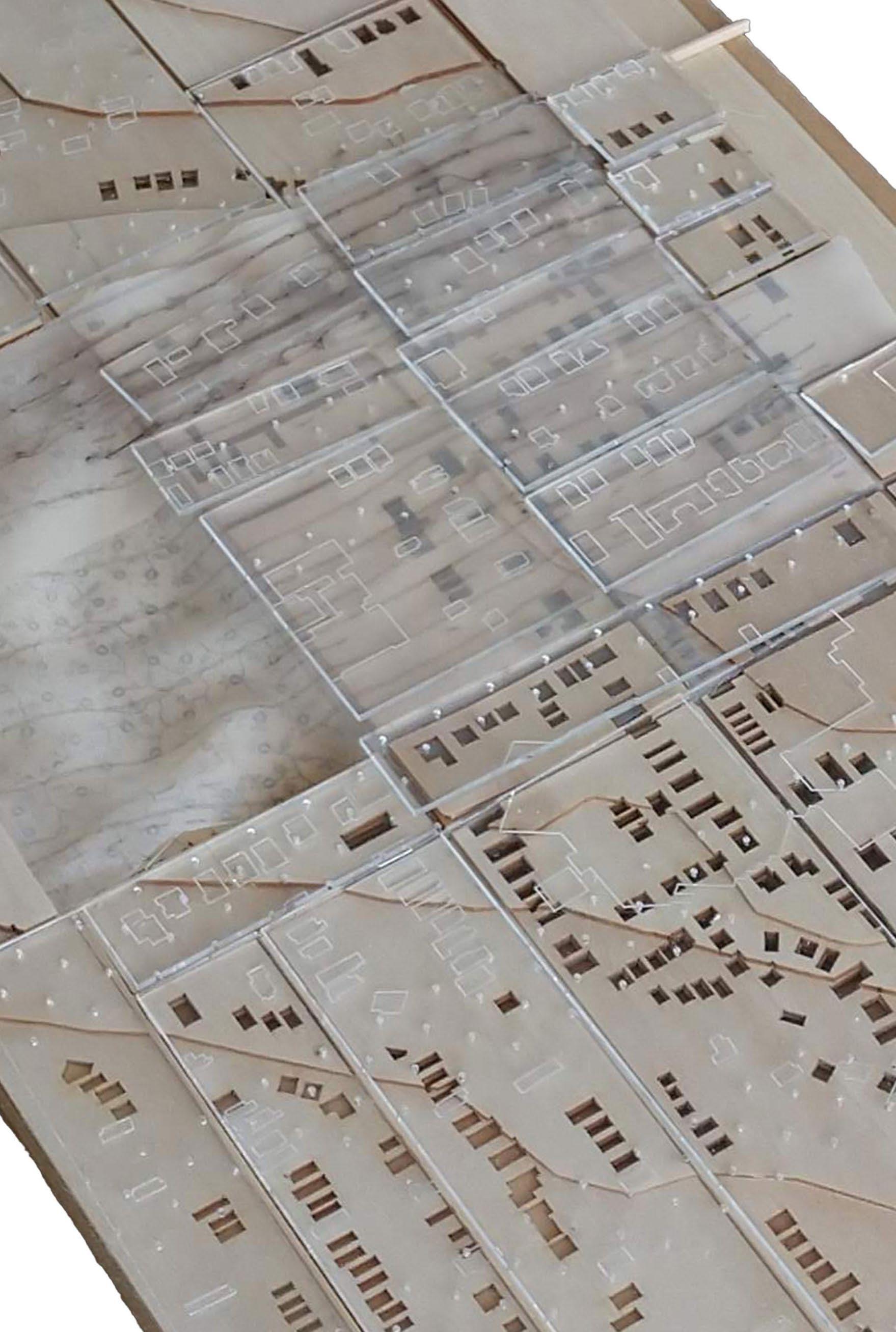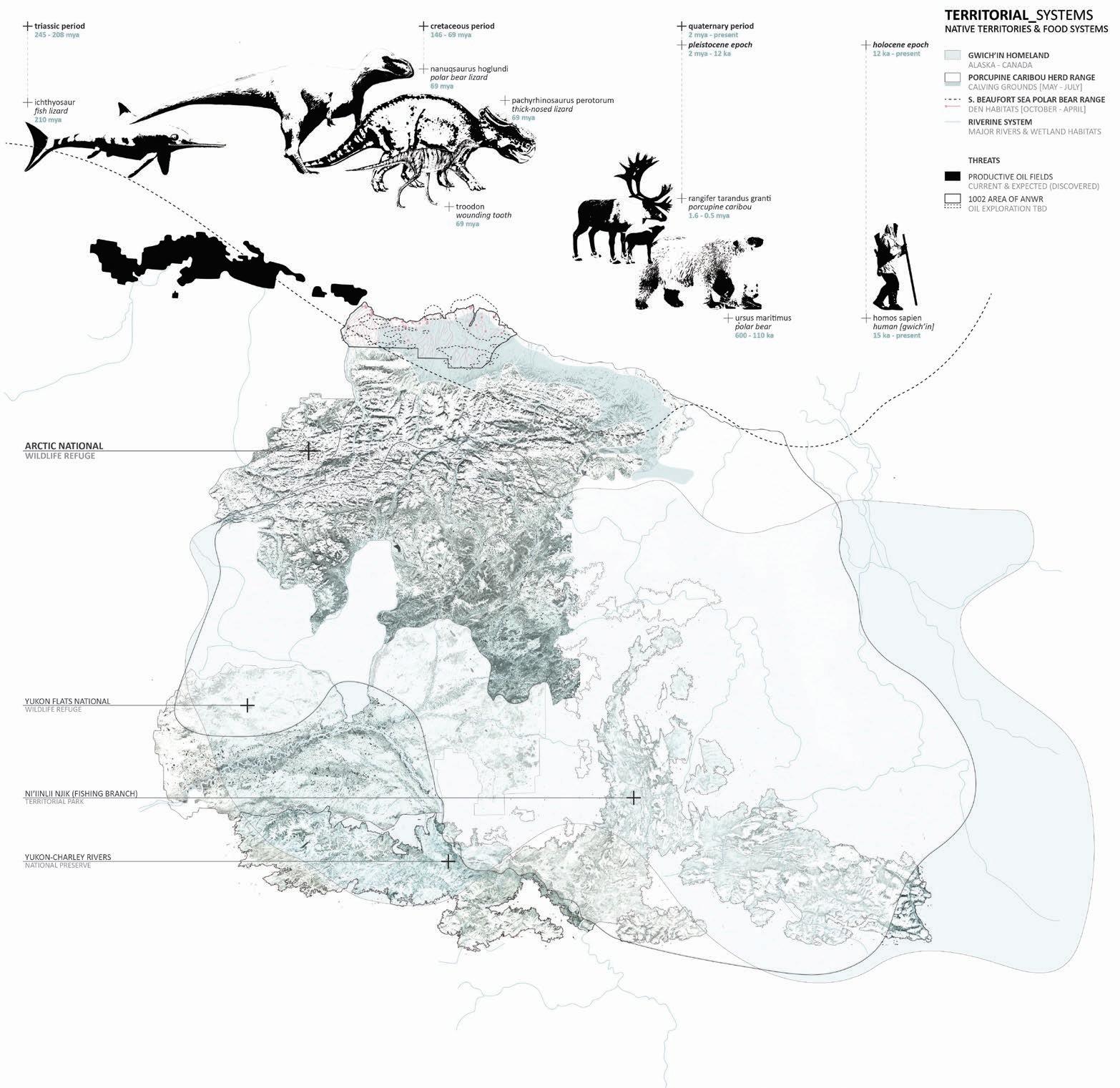
ACSA110 Best Project Award | the project investigated identity in the Alaskan Arctic, resulting in a chronicled atlas of maps, spatial data, and imaginative projection. It serves as an index for the examination of ephemeral geographies – the collection of agents, systems, ecologies, economies, and histories that are perpetually in flux – that define the notion of place arguably more so than physical geographies. While identity in the Alaskan Arctic has been predicated on an intimate history of systems for generations, new pressures of additional petrochemical development, climatic instability, coastal erosion, food insecurity and issues with subsistence regulations further threaten the way of life for indigenous people groups. The vulnerability of these communities places them at a disadvantage for having a real voice; therefore, this project and storytelling platform seeks to shift the analysis of place toward one that prioritizes ephemeral geographies in service of stimulating actionable response and a platform for community self-advocacy.
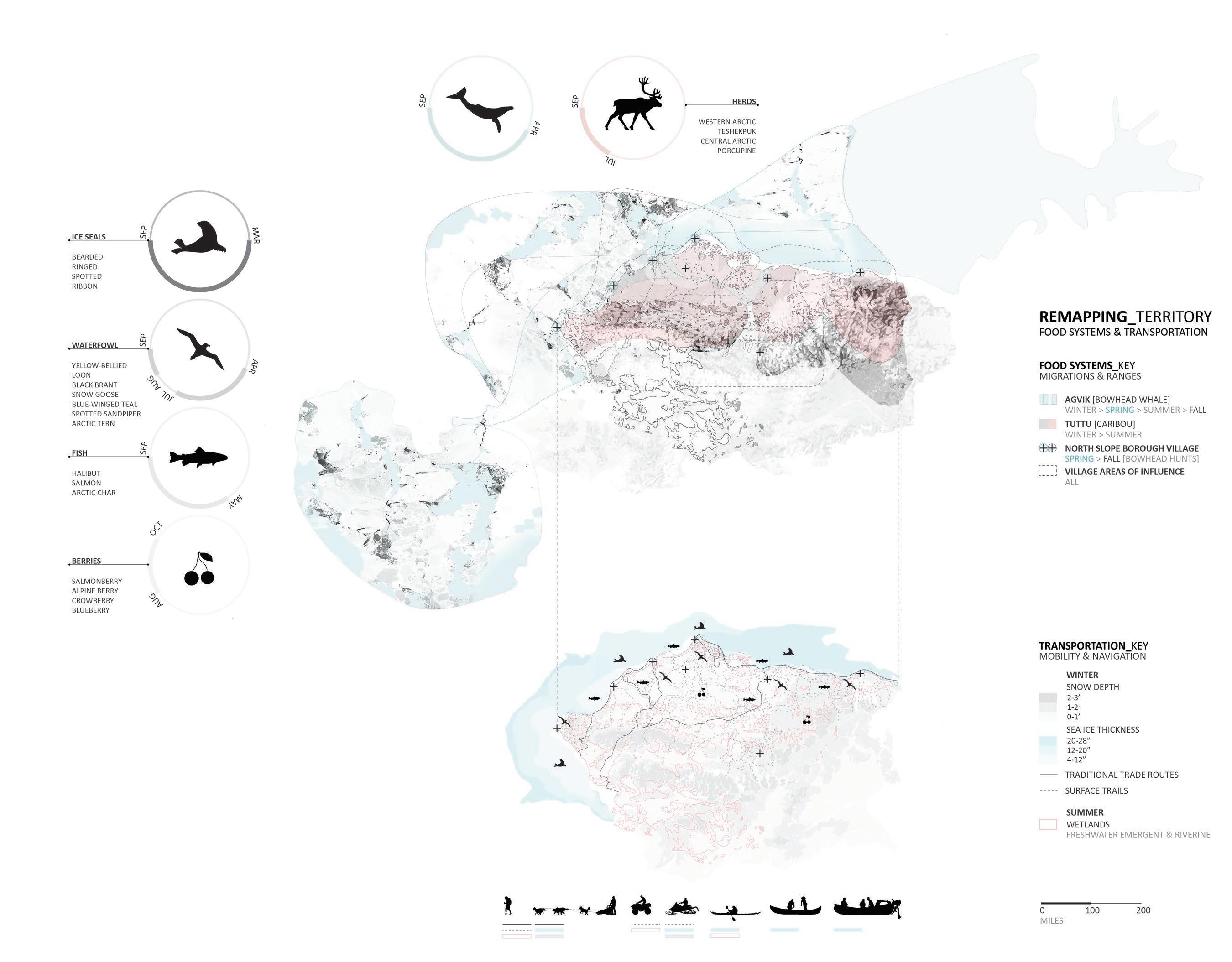
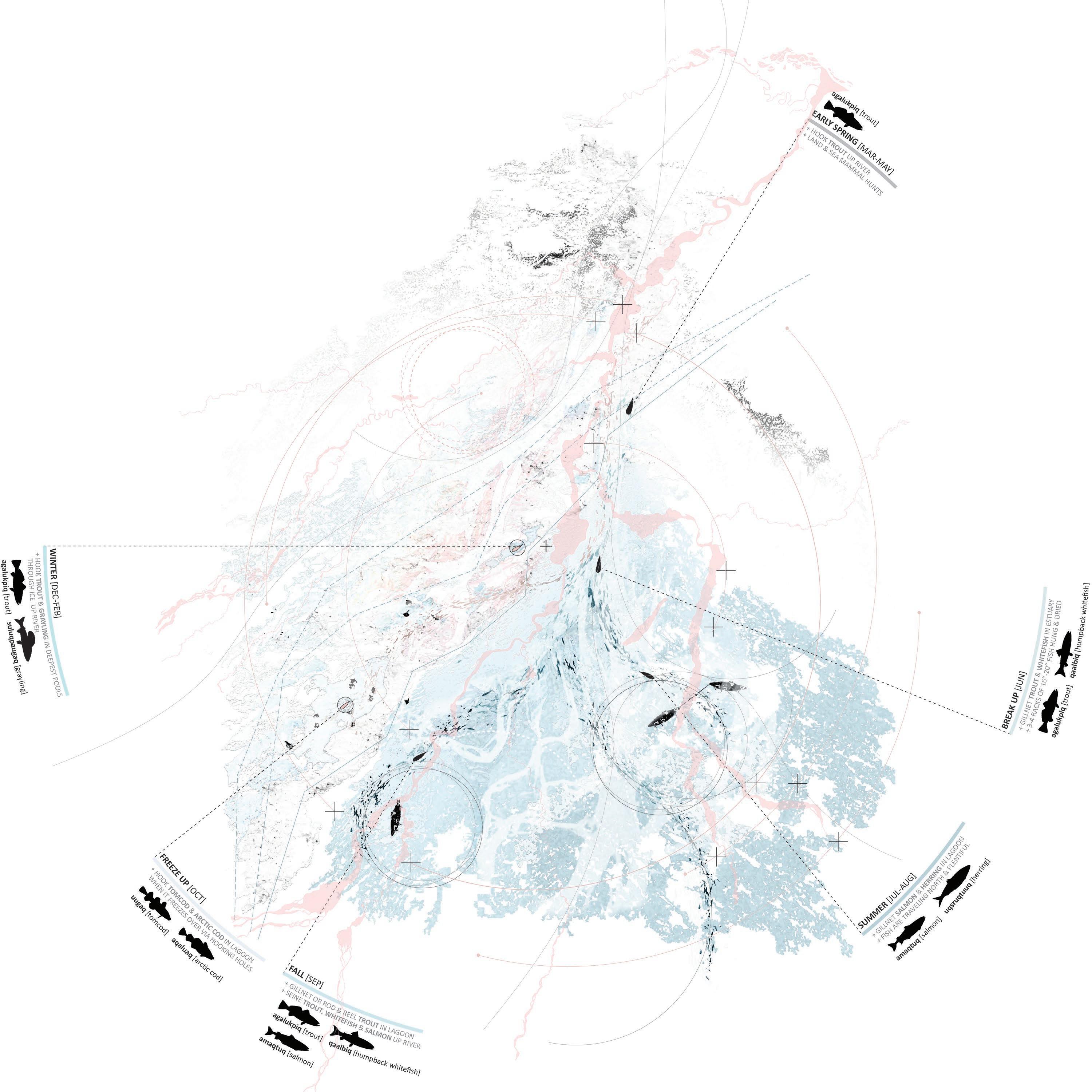
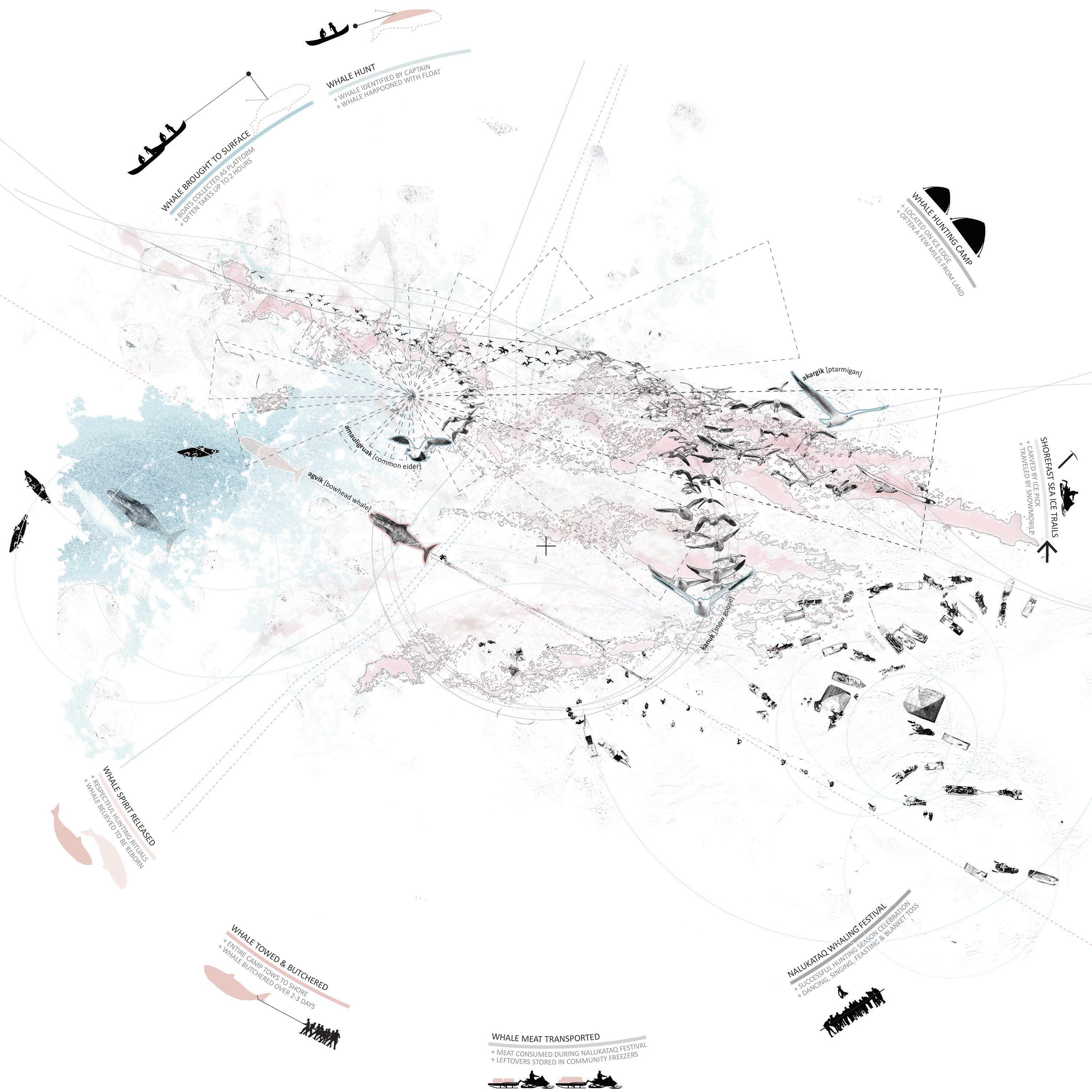

Construction of Spatial Territory | Memory & Tradition left: Ecological Dependencies | Migration & Periphery
Ephemeral Fields in the Alaska Atlas | the use of the field, a critical mapping system of organization, requires a shift in order to forefront the worldviews embedded within geographies defined more by ephemerality than by physicality. This work reframes the field within the Alaska atlas and considers it to have agency, afforded by the intangible, ephemeral forces of a given context, becoming a novel imaginary that narrates a place through the collective operations of memory, migration, periphery, seasons, traditions and imagined realities. Worldviews emerge in the relationships found between these operations, affording the occupants of the map, both human and non-human, a collective voice.


Narrative Mapping Black Settlements | Storytelling on behalf of a collective of Freedman settlements along the Trinity relies heavily on this narrative mapping process. Agents of space and time mapped together create a textured reality from the interlacing of physical places and temporal relationships, as well as through memory and oral histories. It results in a translucency that mimics the passing of time, allowing for moments of both clarity and turbidity. This operation helps to reveal how events from long ago, though not as easily remembered, still live in the subconscious of the life of these settlements, and ultimately lay the groundwork for their identity.



ranch retreat | a texas mesa within the hill country was chosen as the site for a ranch retreat. The modern compound-style main house was designed to house private living sectors with both a master suite wing and a children’s wing, connected by an outdoor living room encased by moveable wooden screens. A specific route up the mesa to the main house is designated by a two-track gravel driveway, allowing each visitor to see into the beautiful distances of each cardinal direction. A tennis pavilion and sunken court become the first destination along the route, leading to a pool and fitness pavilion, a guest retreat and wine cellar, and finally the main house.


teaching
c o n t e n t s
1 / Reimagining the Alaska Atlas 1
ACSA112 Disrupters on the Edge
Published Project
Student Work: Maria Rehmet, Nery Umana, Arte Limani, Alex Lara & Mara Truong
2 / Mining Memory: Remembering the River 9
ACSA113 Repair
Project in Second Peer Review
Student Work: Elizabeth Adebayo & Manasi Taduri

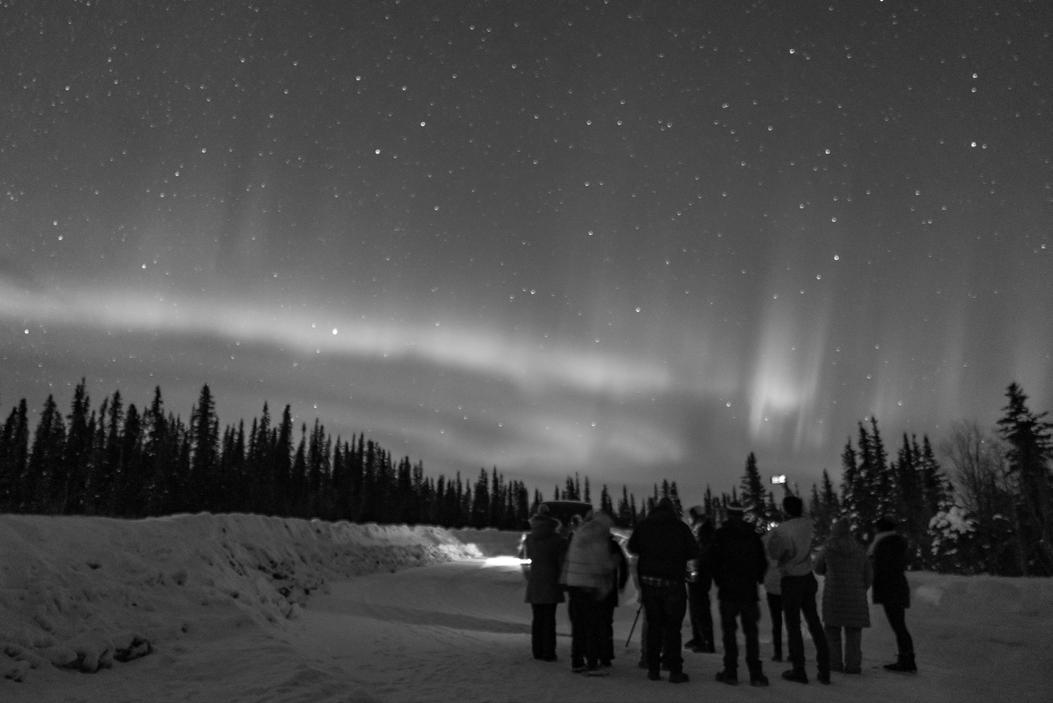


left: mapping migration model + material study models student: maria rehmet
right: project model + presentation design board

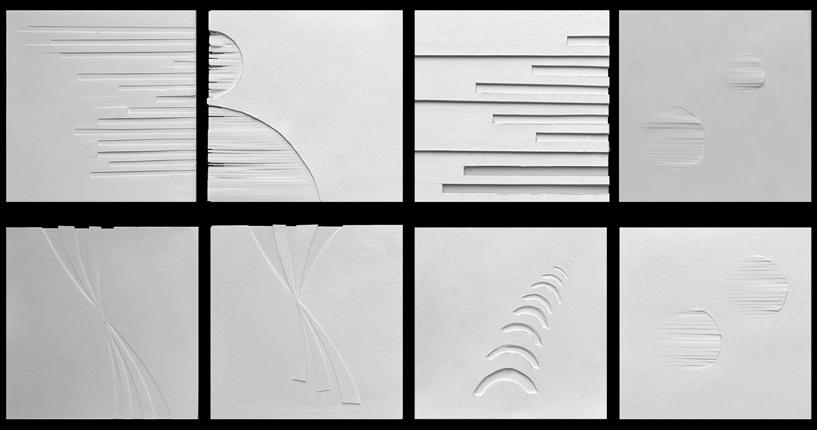


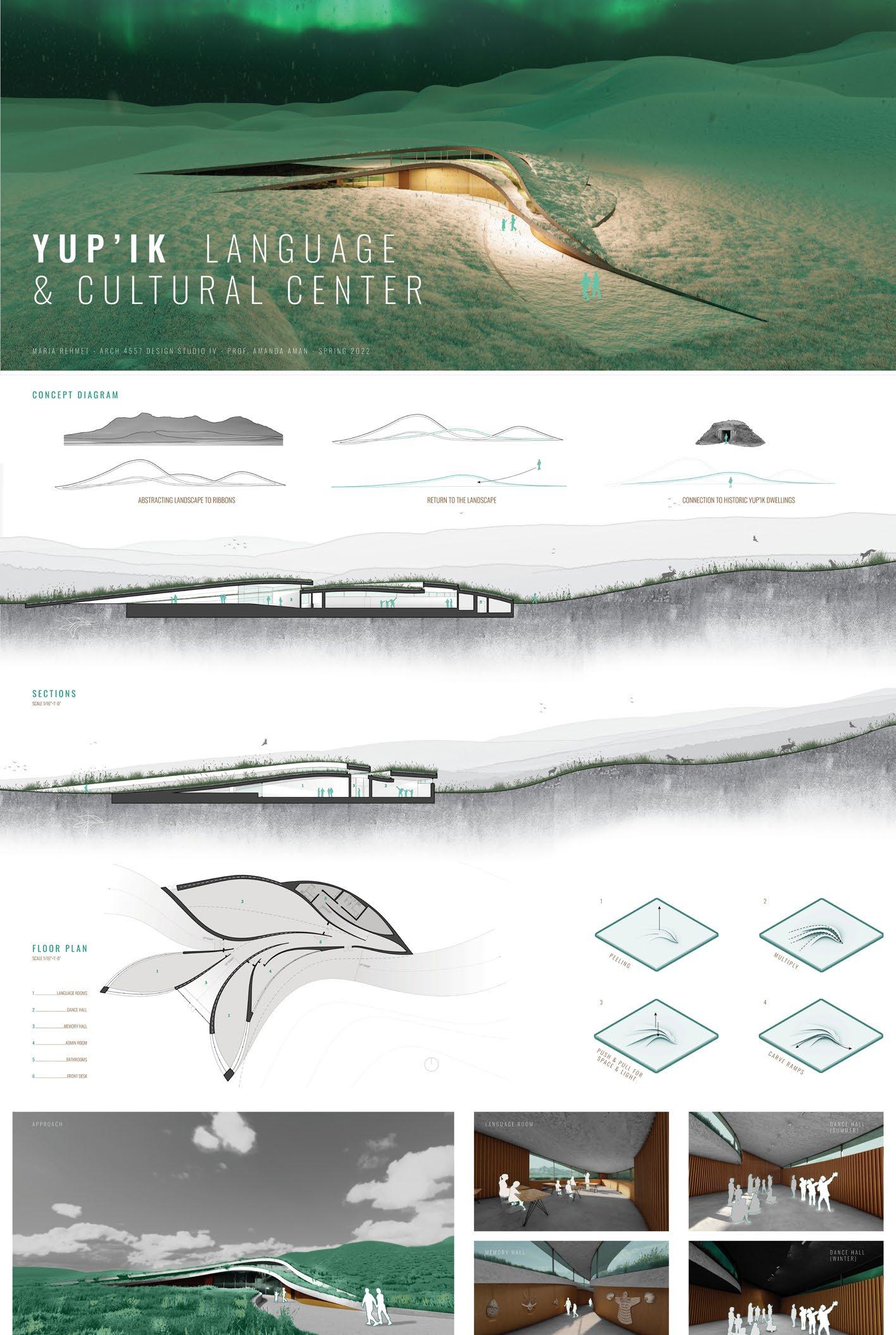
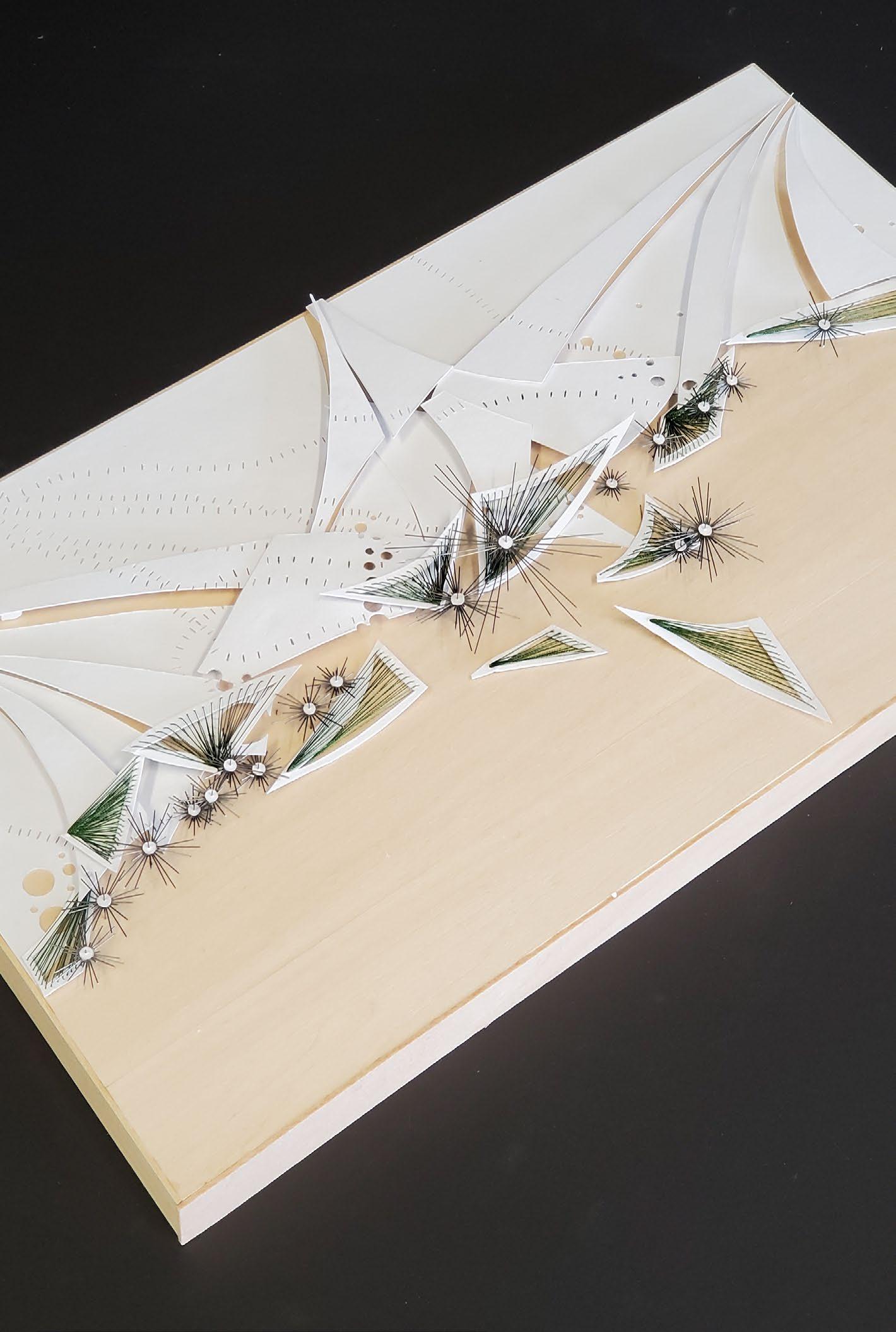
right: project model + presentation design board left: mapping migration model + material study models student: nery umana
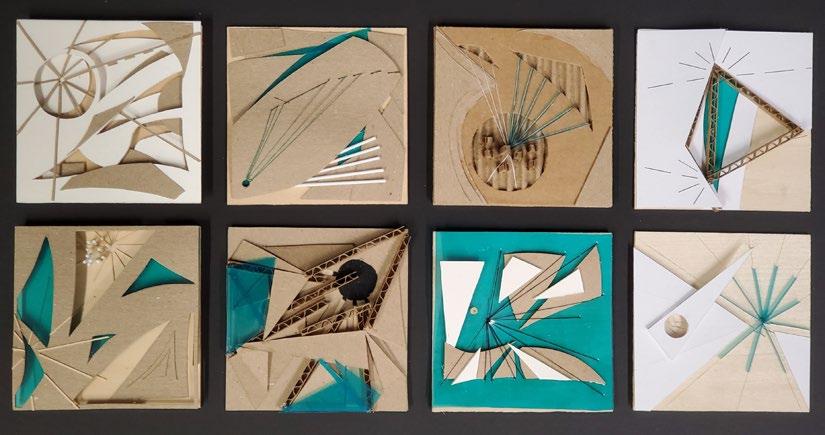







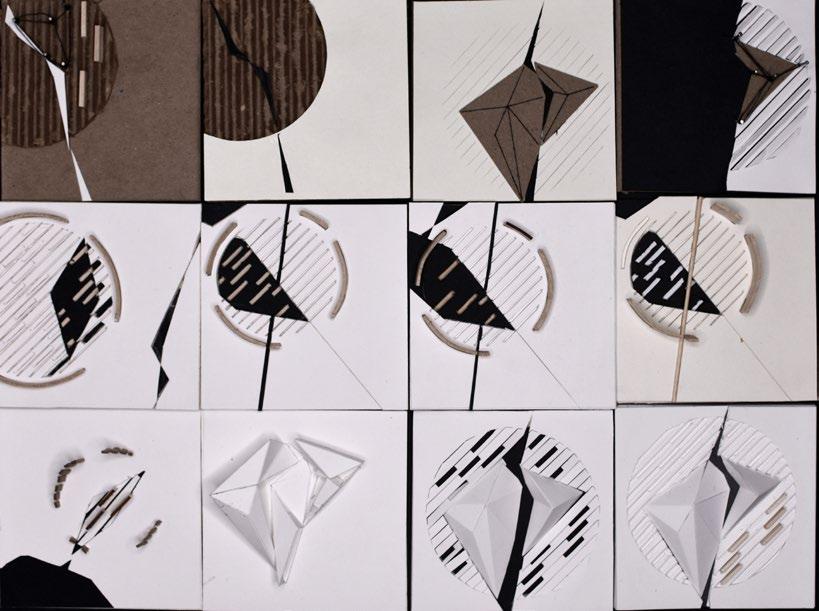
mapping migration model + material study models
right: project model + presentation design board

